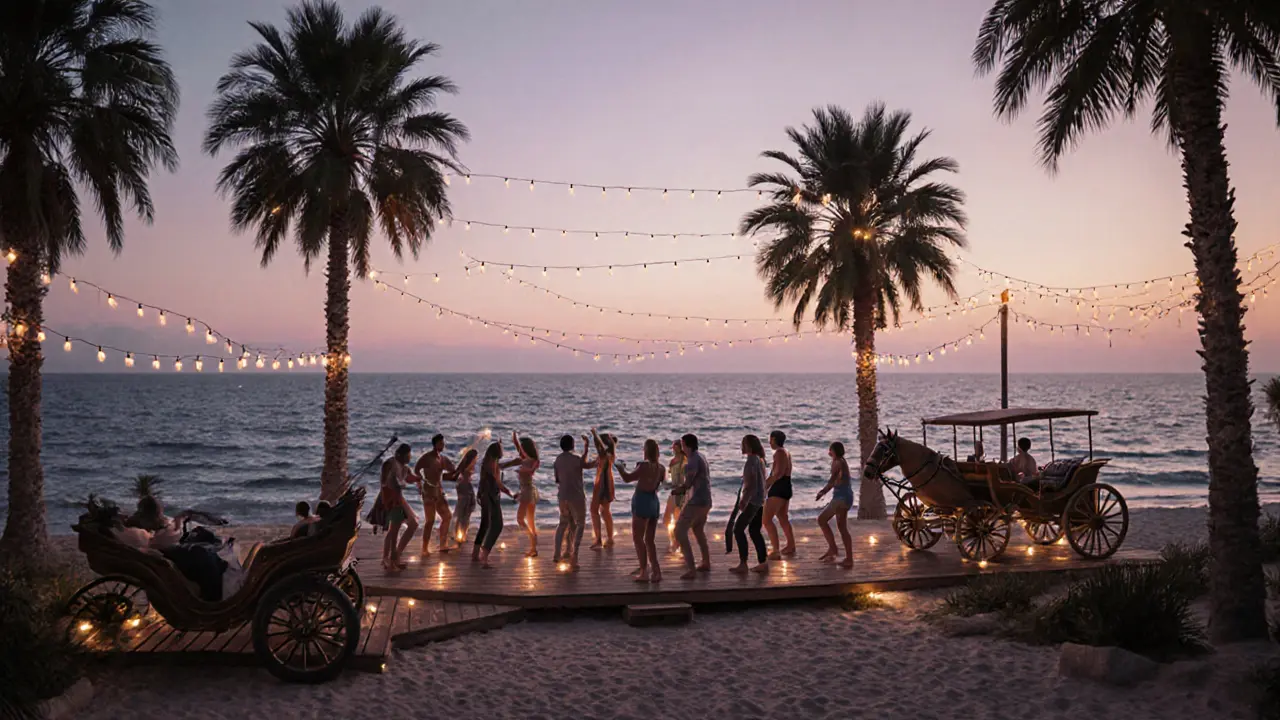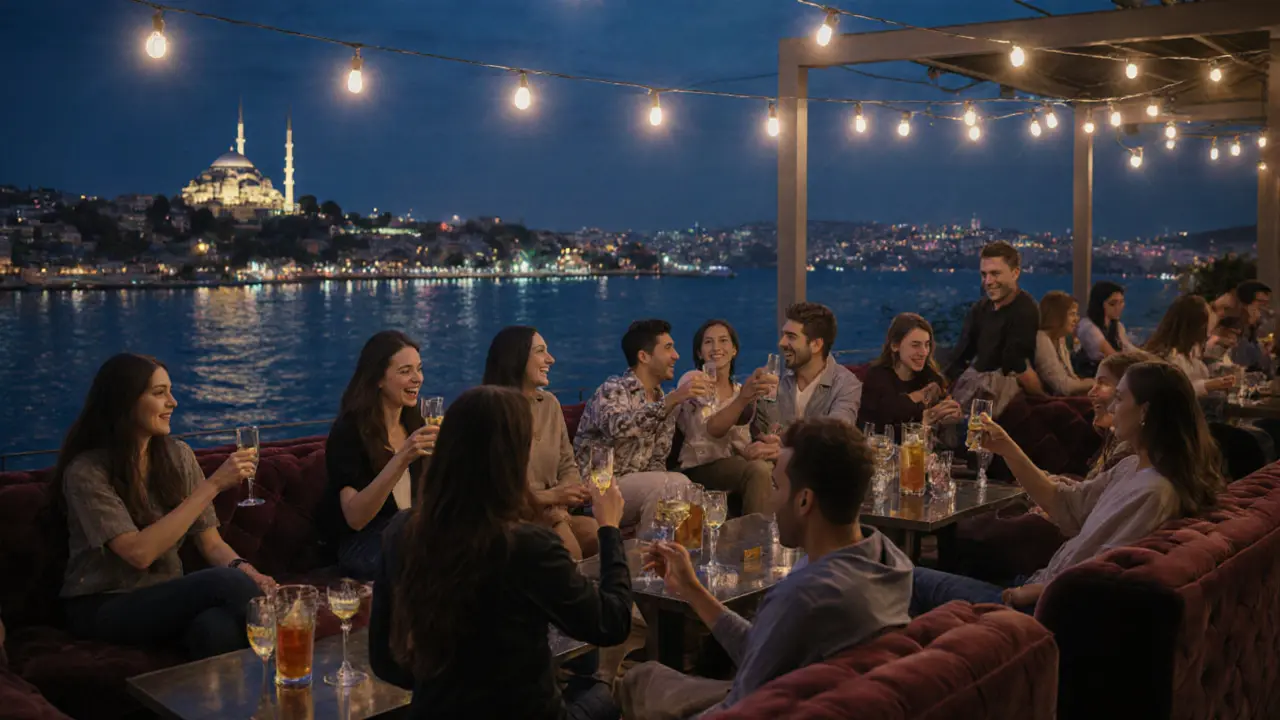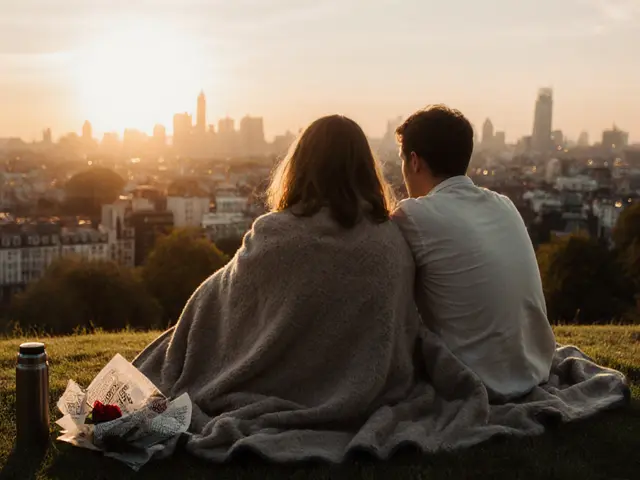When the sun sets over the Bosphorus, Istanbul doesn’t sleep-it wakes up. The city’s nightlife isn’t just about drinking or dancing. It’s a mix of history, rhythm, and raw energy that pulls you in whether you’re a first-time visitor or someone who’s been here five times before. You won’t find just one kind of night here. You’ll find rooftop lounges with skyline views, underground jazz spots tucked into Ottoman-era mansions, beach clubs along the Princes’ Islands, and kebab joints that turn into dance floors by midnight.
Where the locals go after midnight
If you want to feel like a local, skip the tourist-heavy spots near Taksim Square after 2 a.m. Head to Çemberlitaş instead. This neighborhood near the Grand Bazaar has a quiet charm by day, but by night, it transforms. Bars like Bar 21 and Yeni Lokanta serve craft cocktails with a view of the minarets, and the crowd? Mostly Istanbulis in their late 20s to 40s-no tourist hats, no group selfies. They’re here for the music, the conversation, and the way the city lights reflect off the water.
Another hidden gem is Karaköy. Once a forgotten dockside district, it’s now the heartbeat of Istanbul’s creative nightlife. Bar 1910 is a speakeasy-style bar with live blues on weekends and a whiskey list longer than your flight itinerary. Walk five minutes down the street and you’ll find Reina-a massive club on the water that’s been open since the 90s and still draws A-list Turkish DJs. The crowd here is mixed: artists, bankers, students, and expats who’ve lived here long enough to know the real scene.
Beach clubs and island nights
Most people don’t realize Istanbul has beaches-and beach clubs that stay open until dawn. Take the 30-minute ferry from Karaköy to Princes’ Islands, specifically Büyükada. On weekends, Island Club opens its doors with poolside DJs, chilled rosé, and a vibe that feels like Ibiza dropped into the Sea of Marmara. No cars allowed on the island, so you’ll get there by bicycle or horse-drawn carriage. It’s surreal-dancing under strings of fairy lights while the sound of waves replaces bass drops.
On the Asian side, Uzunyali Beach Club in Kadıköy is where young Turks go to unwind after work. It’s not fancy, but it’s real. Locals bring their own snacks, share plates of grilled sardines, and dance to Turkish pop remixes. The dress code? Flip-flops and tank tops. The vibe? Pure, unfiltered Istanbul.
Bars that feel like secret societies
Istanbul’s best bars don’t advertise. They whisper. Bar 1923 in Beyoğlu is one of them. You’ll find it behind a nondescript door with no sign. Inside, it’s all velvet curtains, dim lighting, and bartenders who remember your name after one visit. They make cocktails using Turkish herbs like sumac, mastic, and rose petal syrup. One drink here costs 250 Turkish lira (about $8), but it’s not about the price-it’s about the story. This place opened in 2023 to celebrate the centennial of the Turkish Republic. The menu? Inspired by 1920s Istanbul poets.
Another secret? Yeni Çarşı in Kadıköy. It’s a tiny bar above a bookshop. No alcohol? No problem. They serve non-alcoholic cocktails made with fermented pomegranate, black tea, and lemon balm. The owner, a former jazz musician, plays vinyl records from the 70s while you read poetry by Nazım Hikmet. It’s not a party-it’s a moment.

When the clubs get wild
For the full experience, you need to go where the energy peaks. Reina is still the king, but newer players are catching up. Alma in Nişantaşı opened in 2024 and already has a cult following. It’s a multi-level club with a rooftop garden, a dance floor that feels like a rave in a cathedral, and DJs who mix Turkish folk beats with techno. The bouncers don’t care if you’re wearing jeans or a dress-just don’t show up with a group of 10 people trying to get in at 1 a.m. They’ll turn you away. Capacity is strictly 400, and the line outside is always long.
On the Asian side, Club 7 in Üsküdar is where the underground scene thrives. It’s not on Google Maps. You need a friend with a password. The music? Experimental electronic, Turkish drum loops, and ambient sounds from the Bosphorus. It’s not for everyone. But if you’ve ever wanted to dance to a sound that only exists here, this is your spot.
What to eat when you’re out all night
You can’t party in Istanbul without eating. The city’s night food culture is legendary. At 3 a.m., when the clubs close, head to İstiklal Avenue and find Çiya Sofrası. They serve kebabs, stuffed mussels, and slow-cooked lentils until 6 a.m. Or try Çiğ Köfte stands near Galata Tower-spicy raw meatballs wrapped in lettuce with pomegranate molasses. It’s not for the faint of heart, but it’s the best cure for a night of dancing.
For something lighter, İsmail Usta in Kadıköy makes the best simit (Turkish bagel) with fresh cheese and honey. Open 24/7. Locals call it the “nightlife snack of champions.”
What not to do
Don’t assume Istanbul nightlife is like London or Berlin. It’s not about loud music and long lines. It’s about rhythm, patience, and reading the room. Don’t try to force your way into a club if it feels too quiet-it’s probably a local hangout. Don’t take photos of people dancing without asking. Don’t assume everyone speaks English. Many bartenders and club owners speak Turkish only-and they’ll appreciate you trying to say "Teşekkür ederim" (thank you).
Also, avoid the fake "Istanbul party tours" that promise "VIP access". Most are scams. The real VIP access? Knowing the right person. Or just showing up early, being polite, and letting the night unfold.

When to go
Weekends are packed, especially Friday and Saturday. But if you want the most authentic vibe, go on a Thursday. The crowds are smaller, the music is better, and the energy is more relaxed. Many clubs offer free entry before midnight on Thursdays. That’s when the real insiders show up.
Summer (June-August) is peak season. The weather is warm, the beaches are open, and the clubs stay open until sunrise. But if you’re looking for something more intimate, come in May or September. The heat is gone, the tourists have left, and the locals are back in full force.
How to get around
Public transport runs late. The metro stops at 1 a.m., but the night buses (marked "N") run all night. The N1 goes from Taksim to Kadıköy. The N2 goes from Eminönü to Beşiktaş. Buy a Kartık card-it’s a rechargeable transit card that works on buses, ferries, and trams. It’s cheaper than taxis and way more reliable.
Uber and BiTaksi are common, but drivers often refuse short rides after 2 a.m. if you’re not going far. If you’re heading to a beach club or island, book a private car through a local app like BiTaksi or ask your hotel to arrange one. It’s worth the extra 20 lira.
Final tip: Let the city lead you
Istanbul’s nightlife isn’t something you plan. It’s something you feel. Walk down a street you’ve never seen. Follow the music. Talk to someone at the bar. Say yes to the stranger who invites you to a rooftop party. You might end up dancing on a balcony overlooking the Golden Horn at 4 a.m., drinking raki with a poet who used to be a lawyer. That’s the art of partying here. Not the venue. Not the playlist. It’s the unexpected moments that stick with you long after the last song ends.
Is Istanbul nightlife safe for solo travelers?
Yes, Istanbul’s nightlife is generally safe for solo travelers, especially in areas like Karaköy, Beyoğlu, and Kadıköy. The city has a strong police presence near popular spots, and most clubs have security. But like any big city, stay aware. Avoid walking alone in quiet alleys after 3 a.m., don’t carry large amounts of cash, and keep your phone charged. Locals are usually helpful-if you look lost, someone will likely point you in the right direction.
What’s the dress code for Istanbul clubs?
There’s no strict dress code, but smart casual works best. In upscale spots like Reina or Alma, men often wear dark jeans and a button-down shirt. Women wear dresses or stylish tops with heels. In underground or beach clubs, jeans and a t-shirt are fine. Avoid flip-flops and sportswear in central venues-you’ll get turned away at the door. The rule of thumb? Look put together, but not overdressed. Istanbulans value style, not status symbols.
Do I need to speak Turkish to enjoy the nightlife?
No, but knowing a few phrases helps a lot. Most bartenders and club staff in tourist areas speak basic English. But in local spots, especially in Kadıköy or on the islands, Turkish is the main language. Saying "Merhaba" (hello), "Teşekkür ederim" (thank you), and "Lütfen" (please) goes a long way. Many people will smile, even if they can’t respond in English. It shows respect-and that’s often enough to get you in.
Are there any all-night venues in Istanbul?
Yes, but they’re not clubs. İsmail Usta in Kadıköy serves simit and cheese 24/7. Çiya Sofrası on İstiklal stays open until 6 a.m. Some 24-hour cafés in Beyoğlu serve coffee and baklava all night. As for clubs, most close by 4 a.m., but you can always find people still hanging out on rooftops or in 24-hour shisha lounges. The party doesn’t end-it just moves.
What’s the average cost of a night out in Istanbul?
A night out can cost anywhere from 150 to 800 Turkish lira ($5-$25), depending on where you go. A cocktail at a rooftop bar? Around 150-200 lira. Entry to Reina? Free before midnight, 150 lira after. A kebab at 3 a.m.? 100 lira. A ferry ride to the islands? 25 lira. Most people spend about 400 lira total for a full night-drinks, food, transport, and maybe a club entry. It’s far cheaper than most European capitals.




